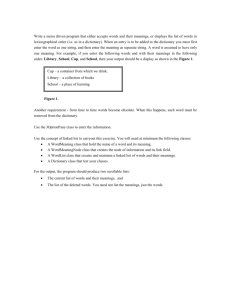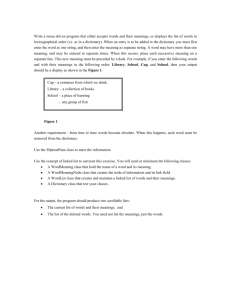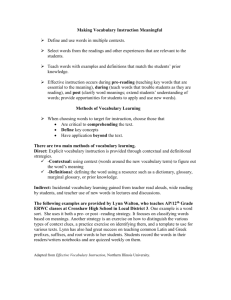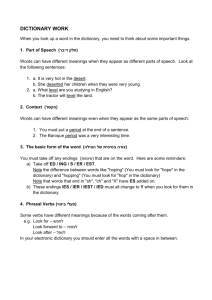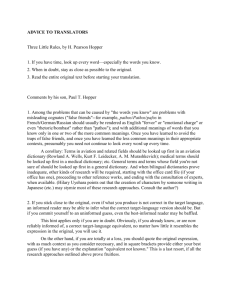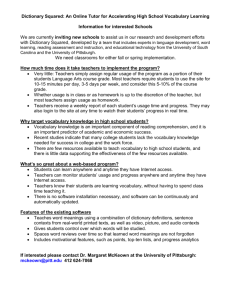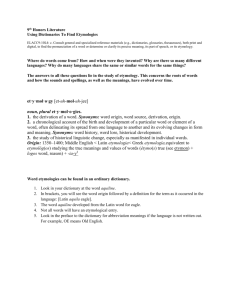How to work out what your teacher wants – (if it
advertisement
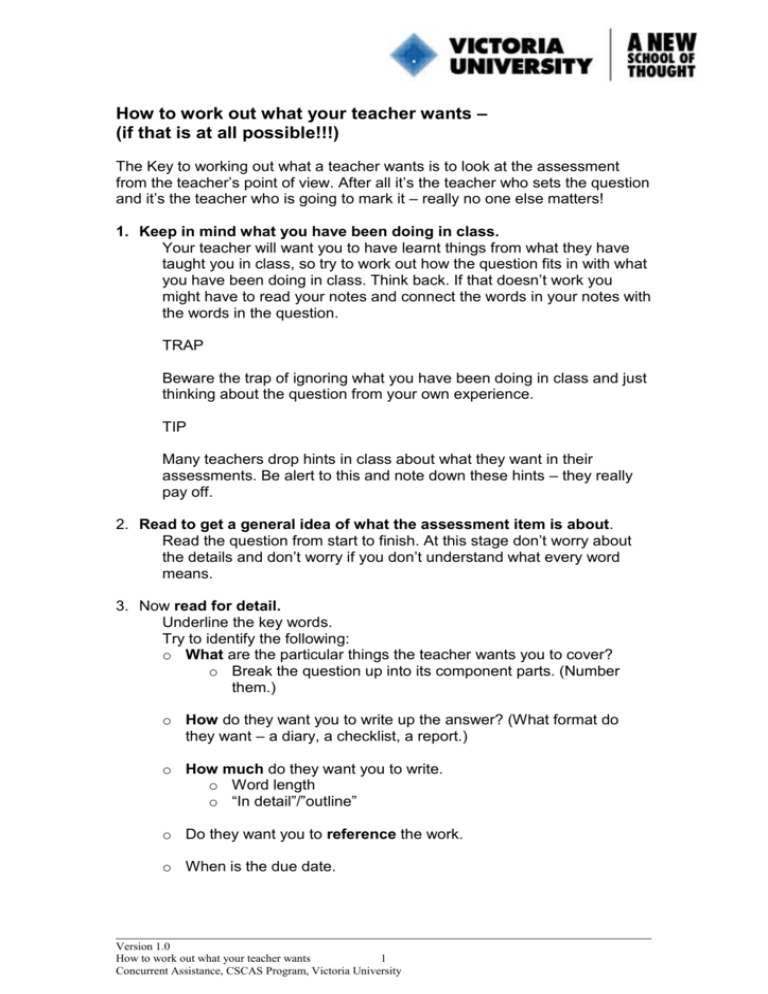
How to work out what your teacher wants – (if that is at all possible!!!) The Key to working out what a teacher wants is to look at the assessment from the teacher’s point of view. After all it’s the teacher who sets the question and it’s the teacher who is going to mark it – really no one else matters! 1. Keep in mind what you have been doing in class. Your teacher will want you to have learnt things from what they have taught you in class, so try to work out how the question fits in with what you have been doing in class. Think back. If that doesn’t work you might have to read your notes and connect the words in your notes with the words in the question. TRAP Beware the trap of ignoring what you have been doing in class and just thinking about the question from your own experience. TIP Many teachers drop hints in class about what they want in their assessments. Be alert to this and note down these hints – they really pay off. 2. Read to get a general idea of what the assessment item is about. Read the question from start to finish. At this stage don’t worry about the details and don’t worry if you don’t understand what every word means. 3. Now read for detail. Underline the key words. Try to identify the following: o What are the particular things the teacher wants you to cover? o Break the question up into its component parts. (Number them.) o How do they want you to write up the answer? (What format do they want – a diary, a checklist, a report.) o How much do they want you to write. o Word length o “In detail”/”outline” o Do they want you to reference the work. o When is the due date. Version 1.0 How to work out what your teacher wants 1 Concurrent Assistance, CSCAS Program, Victoria University What to do if you come across unfamiliar words In English there is not a separate word for each separate meaning. One word can have many meanings; and the one thing can have several words to identify it! Words only have distinct meanings within a context (of both the other words around it and the situation in which it is used). If you come across words you have not seen before or are not sure what they mean, carefully read the words around it and try to figure out what it means in this context. If this still doesn’t clear up the meaning, guess the meaning! If you are still worried, look the word up in a good dictionary. With your understanding of the context, you will be now be able to select which of the dictionary meanings fits best. TRAP If you look up every unfamiliar word in a dictionary you will end up not only not understanding the particular words, but you wont have a clue about what the whole bit of writing is about! This is because words have several meanings, dictionaries aren’t always easy to understand and by stopping and looking up things all the time you lose the context of the whole sentence. TIP Some words have special meanings if they are used in a child studies context. If you look them up in an ordinary dictionary you will get the wrong idea. The best place to find the meaning of these words is in a glossary. Glossaries are usually found at either the front or back of textbooks. If your textbook hasn’t got a glossary, look up the index and find the first page, which uses the word. This page will usually explain what the means. Version 1.0 How to work out what your teacher wants 2 Concurrent Assistance, CSCAS Program, Victoria University What to do if the question still doesn’t make sense You learn far more if you work out the meaning of a question yourself. However if you can’t do this, you can still: 1. 2. 3. 4. check with your buddy, if that doesn’t work you can both check with the class genius, if that doesn’t work you can all check with the teacher, if they are unavailable you can check with a concurrent assistance teacher in the Study Lab TIP Teachers are busy people and they can get annoyed if they think you are only asking them questions because you are too lazy to work it out yourself. They are much more likely to be sympathetic if you show evidence that you have already really tried yourself. A good way to do this, is to choose a convenient time and say something like “I’m not sure about question [identify the question] Is this asking whether [use your own words to say what you think the question is asking]?” The teacher is now aware that you have tried and they also know where you have got it wrong (if you have got it wrong). They are therefore much more likely and able to clear up your problem. Version 1.0 How to work out what your teacher wants 3 Concurrent Assistance, CSCAS Program, Victoria University


